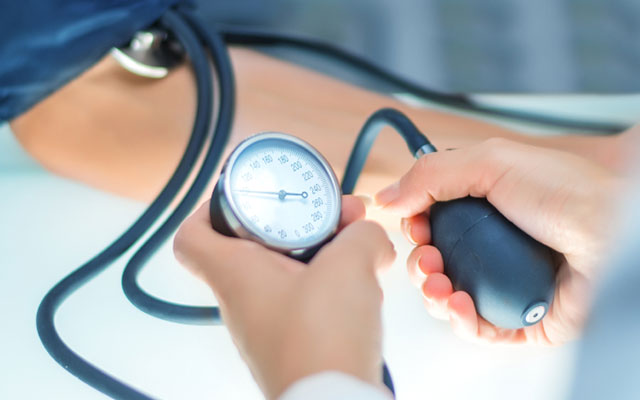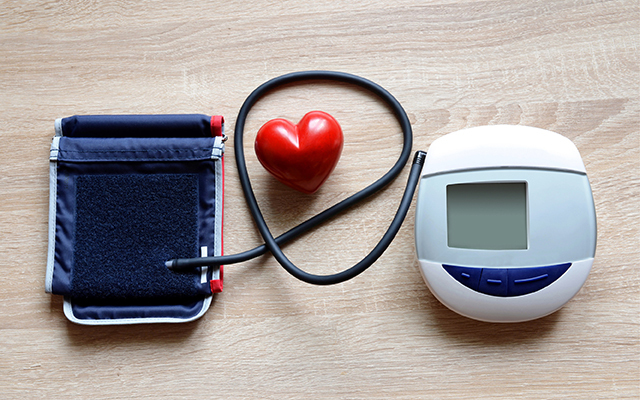There’s always been something about the ritual blood-pressure check in a doctor’s office that made no sense to me. I get that it’s viewed as a diagnostic tool, a marker ostensibly designed to gauge circulatory health and elicit a prescription or trigger some procedure, but how a physician can lean on this one-time measurement to justify any action has always seemed a bit ludicrous. It’s a snapshot, after all: a momentary glimpse of a patient’s cardiological mechanics under conditions that are not always conducive to a tranquil pulse.
On those rare occasions when I’ve been subjected to the inflatable cuff, I tell whoever is cuffing me that the numbers that result will not be realistic, that my heart rate reliably spikes in the presence of a healthcare practitioner. And yet, when my prediction proves accurate, they deliver the rote warning about “the silent killer” and encourage me to begin a drug regimen to cure my alarming hypertension.
I thank them for their concern, acknowledging that seniors are more prone than younger folks to struggle with high blood pressure and its myriad byproducts, but I assure them that I’m taking care of myself. I mention exercise, meditation, diet, sleep, yadda, yadda . . . while they suppress a yawn. Trouble is, I’ve never had the evidence I need to credibly question their protocol.
Now I do.
The results of a study recently published in the journal Circulation: Cardiovascular Quality and Outcomes “throw into question the way that we’ve been managing blood pressure,” Yale cardiologist Harlan Krumholz, MD, who led the research team, tells JAMA.
Krumholz and his colleagues analyzed data from more than a half million outpatients who had visited Yale’s New Haven Health System at least twice between January 2014 and October 2018. More than 7.7 million systolic blood-pressure readings were recorded among that group during that period, but researchers focused specifically on those taken from patients who visited the clinics twice within a 90-day period. They wanted to determine to what degree the readings on these occasions would remain consistent.
What they discovered challenged not only the current measuring protocol, but also the efficacy of the pharmaceuticals often prescribed to lower those numbers. On average, patients’ systolic blood pressure declined by about 12 mm Hg from their first to second visit — a larger reduction than what antihypertension drugs typically produce.
The disparity between these numbers, known as the visit-to-visit variability (VVV), was consistent across all demographic groups — gender, age, race and ethnicity, and medical history — researchers reported. “Notably, there was no patient subgroup with an exceptionally low VVV,” they wrote.
“Physicians are lousy in measuring blood pressure,” says [cardiologist Franz Messerli, MD]. “Lousy blood-pressure measurements are just not very useful.”
Cardiologist Franz Messerli, MD, a professor of medicine at the University of Bern, was not involved in the study, but he wasn’t surprised by the results. “Physicians are lousy in measuring blood pressure,” he says. “Lousy blood-pressure measurements are just not very useful.”
And those readings are conditional, subject to change for various reasons, he adds, noting that blood pressure “varies from heartbeat to heartbeat, from winter to summer, from sitting to standing.”
Critics of the study, including Paul Drawz, MD, associate chair of clinical research at the University of Minnesota Medical School, argue that researchers would’ve produced more valuable insights had their data been based on standardized blood-pressure protocols. Sloppy procedures, in other words, could’ve skewed the readings.
But Krumholz notes that their findings were similar to those of the seminal Antihypertensive and Lipid-Lowering Treatment to Prevent Heart Attack Trial (ALLHAT), a large-scale standardized clinical study. That suggests “greater standardization of clinician-measured blood pressure may not decrease this variation further,” he says.
It’s this variation, he adds, that increases the odds that physicians will prescribe unnecessary antihypertension drugs. “We could be reacting to noise a lot as opposed to the signal.”
Several years ago, at the urging of a functional-medicine doctor, I bought a blood-pressure monitor and tested myself a couple of times a day for a week or so. The numbers were significantly lower than the readings in his office and generally below the 150/80 mm Hg then recommended for seniors by the American Heart Association. This is the approach Steven Nissen, MD, chair of cardiovascular medicine at the Cleveland Clinic Lerner College of Medicine, and other cardiologists suggest as an alternative to relying on in-office readings.
“I don’t want to make people crazy about it,” Nissen says, “but I think they can build it into their routine.” Recording those numbers once in the morning and once in the evening for a few weeks can establish a baseline to help their doctor determine a treatment approach. Then, monitoring it a couple of days a week will determine whether it’s working.
Drawz says he asks his patients to record two morning and two evening readings each day for a week before they show up for an appointment. He averages those numbers as part of his diagnostic protocol. “Unless they’re symptomatic,” he explains, “you almost don’t need a clinic measurement.”
Recording [blood pressure] numbers once in the morning and once in the evening for a few weeks can establish a baseline to help their doctor determine a treatment approach. Then, monitoring it a couple of days a week will determine whether it’s working.
Ambulatory blood-pressure monitoring, devices that record patient numbers over a 24-hour period, are more accurate — and less prone to patients fudging their home-monitoring results. It’s a popular approach among Messerli’s colleagues in Switzerland, where the healthcare system covers the costs, but it’s not widely accessible in the United States. On the plus side, it can monitor a patient’s blood pressure while they sleep, a time when those numbers should dip. If they don’t, the patient’s risk of heart disease increases, and their doctor can recommend a specific treatment plan. The downside: Who wants to wear a blood-pressure cuff for 24 hours?
“I hope that innovation will come to our rescue,” Krumholz says. But current efforts do not inspire hope. As Tim Culpan writes in Bloomberg News, Australian researchers recently evaluated 532 wristband devices promoted as blood-pressure monitors. Because they only measure your pulse, their algorithms can only estimate your blood pressure. None of them met international standards.
As much as this validates my view of this ongoing cardiological controversy, and as much as I welcome the evidence to make my case the next time I’m cuffed, I can’t say I’m likely to push the point beyond a polite comment. The last place I want to incite an argument is in a doctor’s office. My blood pressure would go right through the roof.





This Post Has 0 Comments